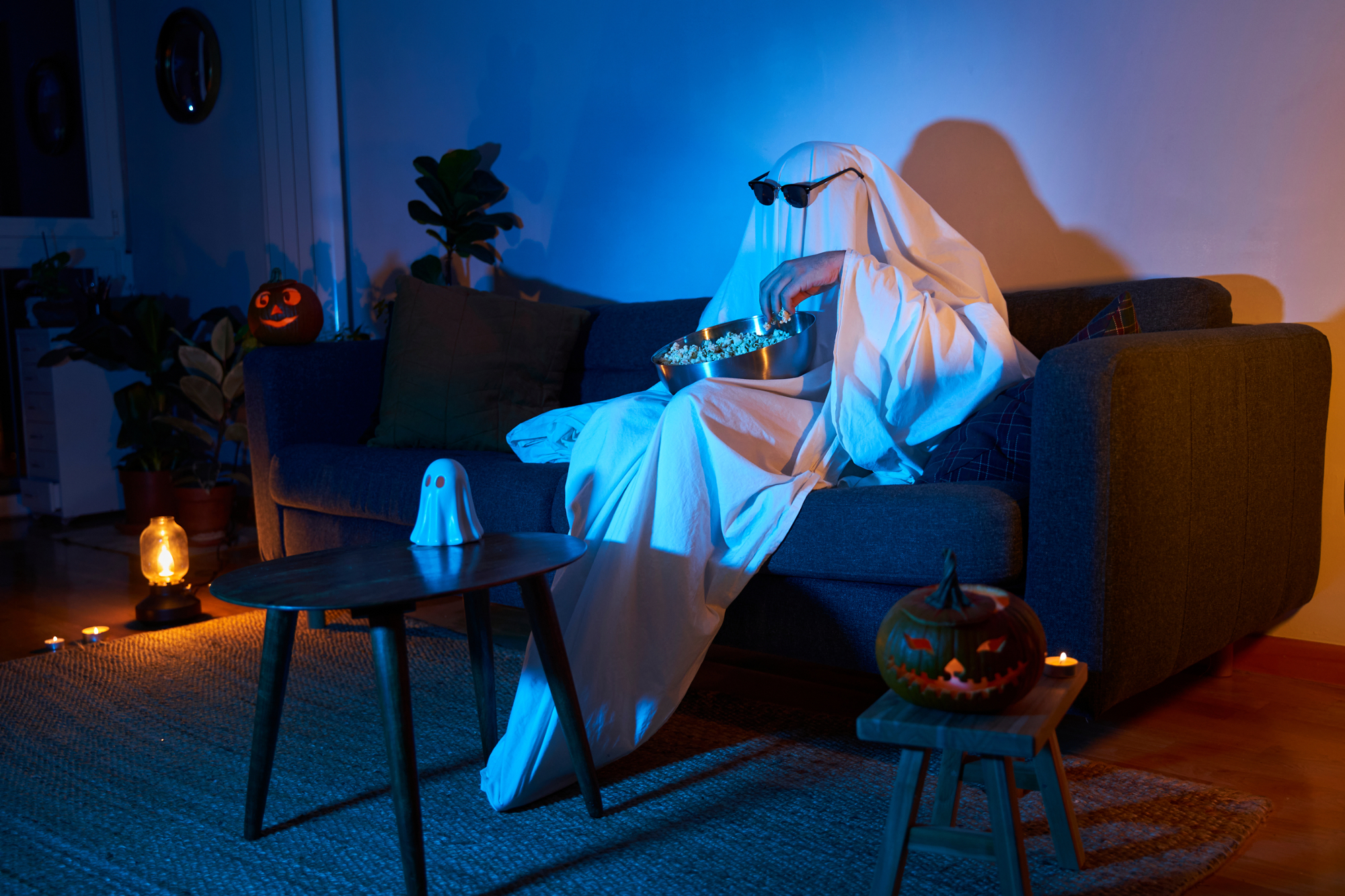MGA Faculty Q&A: Exploring The Scary Movie Genre With Dr. Patrick Brennan
Author: Sheron Smith
Posted: Monday, October 28, 2024 12:00 AM
Categories:
Pressroom | School of Arts and Letters | Faculty/Staff
Macon, GA

Why do scary movies have such enduring appeal with movie audiences? Just in time for Halloween, we explore that question and others with Dr. Patrick Brennan, film scholar and MGA professor of English. After reading this, you might want to register for his spring 2025 upper-division film class, Hybrid Film Theory NMAC 4482. If you dare.
Why do you think people are so drawn to scary movies? What is it about the horror genre that keeps audiences coming back for more?
I think that people like scary movies for a few reasons. They provide excitement. We identify with a character, and when this character gets stabbed, chased, or tormented, our adrenaline pumps as if it were happening to us. But of course it is not. We are safely situated outside of the movie. Horror movies can also provide comfort. No matter how bad our day has gone, at least we are not having our intestines ripped out by zombies like that character onscreen. In addition, horror movies can help us get rid of bad feelings. A horror movie gives us a place to put our anxieties. We can project them onto the situation in the movie, leave them there, and feel cleansed when the movie is done.
How do scary movies reflect the fears and anxieties of the time in which they were made? For example, are there any recent horror films that you think capture today's societal concerns?
Some horror movies simply reflect changes in what society allows to be shown when they are being made. For instance, the unstoppable killer who murders his victims in inventive ways shows up in the 1970s, just as the more permissive MPAA ratings were taking effect. He then persists in horror movies going forward: Michael Myers, Jason Voorhees, Freddy Kruger, Ghostface, and Jigsaw show up in movies that span from the 1970s to the present. This figure of the unstoppable killer arguably personifies our universal fear of death: he cannot be deterred and eventually comes for us all. Horror movies about fear of contagion also seem to cross the decades. For instance, Night of the Living Dead (1968), Rabid (1977), The Hidden (1987), Disturbing Behavior (1998), 28 Days Later (2002), It Follows (2014), and Smile (2022) all deal with something horrific uncontrollably passing from person to person.
Other horror cycles seem more firmly rooted in their eras. The fifties had several horror movies about out-of-control science causing nature to run amok, usually because of someone detonating an atomic bomb, such as Godzilla (1954), Them (1954), and Tarantula (1955). In the eighties, we had lots of films about toxic waste creating monsters, which dovetailed with growing societal concerns about pollution: C.H.U.D. (1984), The Toxic Avenger (1984), and Street Trash (1987) are a few. M3gan (2022) is a recent film that resonates with current anxieties about artificial intelligence. Then again, it also belongs to a long tradition of horror movies about dolls that kill, such as The Devil-Doll (1936), Dead of Night (1945), Trilogy of Terror (1975), Magic (1978), Dolls (1986), the Puppet Master franchise (1989-1994), and Annabelle (2014).
The state of Georgia has become a major hub for film production, including horror movies. What role do you think Georgia’s film industry plays in shaping the genre? Can you share any examples of well-known horror films or TV series shot here?
There are a lot of horror-themed TV shows and horror movies shot in Georgia, primarily for economic reasons. Georgia is cheaper than California, and our state offers strong tax incentives for production companies to shoot here. The Walking Dead (2010-2022) is probably the most famous horror-themed TV show shot in Georgia. It stands out because it is also mostly set in Georgia. The Vampire Diaries (2009-2017), The Originals (2013-2018), Teen Wolf (2011-2017), The Haunting of Hill House (2018) and Stranger Things (2016- present) are other horror-themed TV shows made in Georgia. Some big horror movies that have been partially or fully filmed in Georgia include Scream 2 (1997), The Crazies (2010), Zombieland (2013), Dr. Sleep (2019), The Conjuring: The Devil Made Me Do It (2021), and Haunted Mansion (2023). In addition, Tyler Perry’s Boo! A Medea Halloween (2016) and Boo 2! A Medea Halloween (2017) are horror comedies, a subgenre of horror, which Perry produced at his studio in Atlanta.
My favorite horror movies made and set in Georgia are Madhouse (1981) and Squirm (1976). Madhouse is a weirdly effective regional slasher. It has lots of creepy scenes and takes place all over Savannah, not just in the historic district. Squirm is set in Port Wentworth, which is located just outside of Savannah. It is about a plague of bloodworms and is aptly named. It really will make you squirm.
What is your favorite scary/horror movie and why?
This question is hard to answer. My favorite Classical Hollywood horror movie is The Haunting (1963), based on Shirley Jackson’s novel The Haunting of Hill House. It features a great script, an unsettling atmosphere, crisp direction, and phenomenal performances by all four of its leads. I try to watch it every Halloween. My favorite R-rated horror movie has got to be The Exorcist (1973). It is filmed very naturalistically, so when the horror arrives, it feels very real. Two recent horror movies that surprised me are the Indonesian horror movie Satan’s Slaves (Joko Anwar, 2017) and the Argentinian horror movie Terrified (Demián Rugna, 2017). If you want to be scared, I can’t recommend these two titles enough!